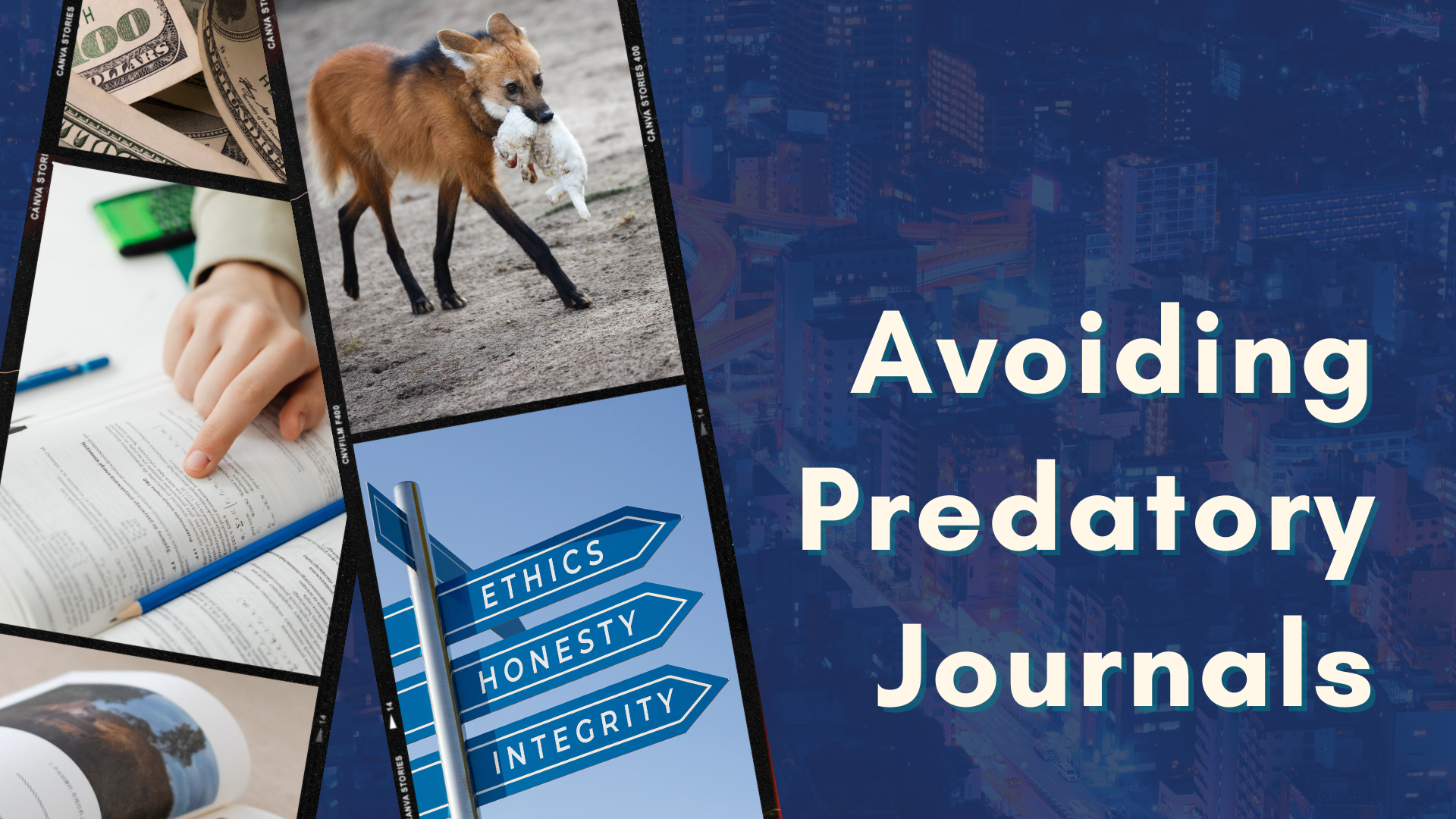
Avoid Falling Prey to Predatory Journals
— by Fanny Liu
Predatory journals
The emergence of predatory journals (fraudulent, deceptive, or pseudo-journals), journals with deceptive and dishonest practices, has been reported in recent years [1-4]. The journals falsely claim to be offering peer review and publish all articles, regardless of their research rigor, in exchange for a fee.
Predatory journals exploit the open-access model in which the author pays the article processing charges. They may hide information about article processing charges, misrepresent members of the editorial board, and violate other copyright or scholarly ethics. These journals are of questionable or even downright low quality.

[Image curtesy of いらすとや]
Fake paper sting operation
In 2013, a journalist John Bohannon conducted a sting operation and submitted a fake medical paper with glaring faults to 304 open-access journals [5]. 51.6% of the journals accepted the paper – most of them with no or superficial peer review. Among the publishers on Beall’s list* that completed the review process, 82% accepted the paper. This confirms the lack of standards of some of these predatory journals.
*Beall’s list was a list of ‘potential, possible, or probable predatory’ journals and publishers who allegedly engaged in fraudulent practices, maintained by the scholarly librarian Jeffrey Beall between 2010 and 2017 [2].
Fake scientist sting operation
In another sting operation in 2017, a group of scientists created a fake scientist with fake previous publications, and submitted an application of this fictional character for an editor position to 360 journals, a mix of legitimate and suspected predatory ones [6]. 48 journals accepted. At least 12 appointed the fictional scientist as an editor in return for, or strongly encouraging, payment or profit.
While the applications were later withdrawn from all the accepting journals, the sham scientist was still listed on the editorial boards of at least 11 of the journals, and at least one journal which did not receive an application.
This demonstrated misrepresentation of members of the editorial board and the lack of standards in some of these predatory journals.

[Image curtesy of いらすとや]
Different propensity across fields
The propensity to publish in predatory journals differs substantially across subject fields [2]. A study on 46,244 researchers in Italy in 2012 revealed that 0.3%, 0.5%, 0.7%, 1.6% and 4.1% of articles in English were published in a journal in the Beall’s list in sciences, medicine, social sciences and humanities, engineering, business and economics respectively (Figure 1).

Figure 1: Percentage of articles written in English published in Beall’s list journals by researchers in Italy, categorized into different subject fields [2]
Damage of predatory journals
Fake peer review undermines the science conversation [4]. Articles with flawed research cannot receive proper, if any, peer researcher’s feedback before publication. This may lead to misinformation entering the research community and divert effort away from more legitimate research.
Imagine you are a researcher who has gone through the long journey of…
- finding a significant research topic,
- spending days and nights in the laboratory, in the field or at your desk to research on it,
- compiling a readable article to communicate your robust findings,
- getting accepted by a journal, and found that your hard-earned article is right next to an article claiming that:
“the Prehistoric human populations lived in MARS planet are super scientists and expert in Astronomy, Astrophysics, Engineering Architect who constructed the huge Pyramid structures“.
How do you feel? Do you think your research findings can reach, or gain trust from, your target audience?

Figure 2: An article in International Journal of Scientific and Engineering Research (IJSER), a journal in Beall’s List (Screen capture as of 17 April 2023)
Think, Check, Submit
The Committee of Publication Ethics (COPE) has published a discussion document describing the characteristics and warning signs of predatory publications, including:
- Hidden or unclear author fees
- Lack of quality peer review
- Guaranteed acceptance and unreasonably short publication time
- Lack of policies on research misconduct or publishing ethics
- Missing editorial team/contact information
- Poor language usage [7]
The document also recommends tactics for researchers to identify trusted journals, e.g.:
- Verify spam email invitations to submit manuscripts or attend conferences.
- Check journal names, ISSN, and URLs are real ones.
- Verify claimed metrics and database indexing status.
- Read some published articles to check quality.
Of attention is the “Think.Check.Submit” checklist for researchers to look for trustworthy journals: https://thinkchecksubmit.org/journals/
In addition to the “Think.Check.Submit” checklist, here are some tools to check whether a journal is…
Peer-reviewed:
- Ulrich’s Periodicals Directory (Ulrichsweb) – http://find.lib.hku.hk/record=alma991020010889703414
Indexed by popular databases:
- Web of Science – http://find.lib.hku.hk/record=alma991018968639703414
Open access and compliant with the principles of transparency and best practice in scholarly publishing:
- DOAJ (Directory of Open Access Journals) – https://doaj.org/

[Image curtesy of いらすとや]
Selecting journals for publication can affect how research findings reach the research community and the general public. Researchers should always think and check before submitting.
References
[1] J. Beall, “Predatory publishers are corrupting open access,” Nature, vol. 489, no. 7415, pp. 179-179, 2012, doi: 10.1038/489179a.
[2] M. Bagues, M. Sylos-Labini, and N. Zinovyeva, “A walk on the wild side: ‘Predatory’ journals and information asymmetries in scientific evaluations,” Research Policy, vol. 48, no. 2, pp. 462-477, 2019, doi: 10.1016/j.respol.2018.04.013.
[3] S. Cuschieri, “The Art of Journal Selection,” in A Roadmap to Successful Scientific Publishing: The Dos, the Don’ts and the Must-Knows, S. Cuschieri Ed. Cham: Springer International Publishing, 2022, pp. 65-79.
[4] S. A. Elmore and E. H. Weston, “Predatory Journals: What They Are and How to Avoid Them,” Toxicologic Pathology, vol. 48, no. 4, pp. 607-610, 2020, doi: 10.1177/0192623320920209.
[5] J. Bohannon, “Who’s afraid of peer review?,” Science, Note vol. 342, no. 6154, pp. 60-65, 2013, doi: 10.1126/science.342.6154.60.
[6] P. Sorokowski, E. Kulczycki, A. Sorokowska, and K. Pisanski, “Predatory journals recruit fake editor,” Nature, vol. 543, no. 7646, pp. 481-483, 2017, doi: 10.1038/543481a.
[7] COPE Council, “COPE Discussion Document: Predatory Publishing,” 2019. [Online]. Available: https://publicationethics.org/sites/default/files/cope_dd_a4_pred_publishing_nov19_screenaw.pdf.


